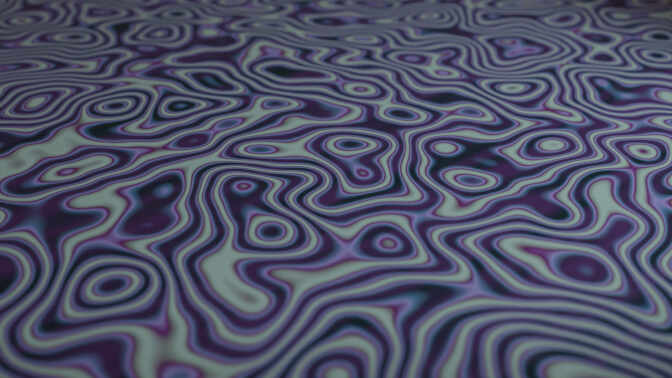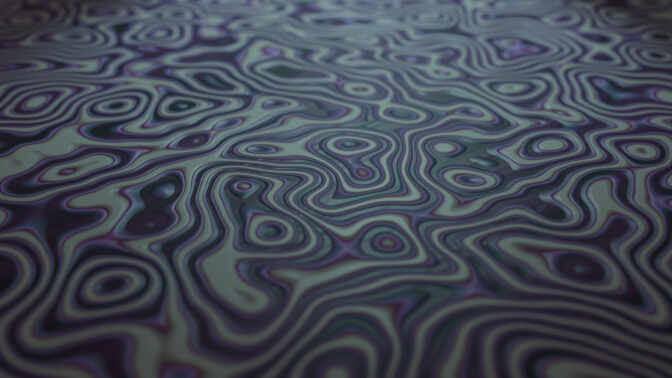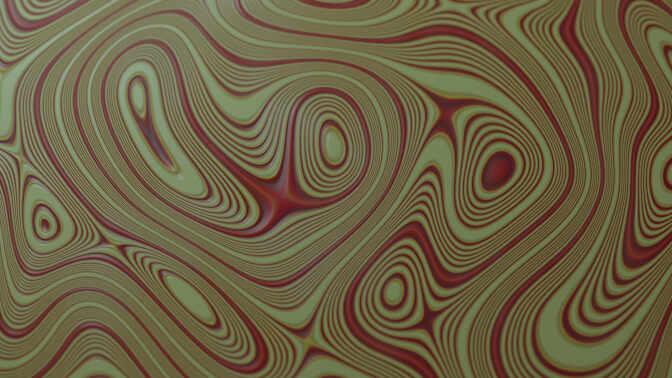



I’ve been continuing my exploration with the potential of shaders in Blender. Recently I’ve been revisiting materials from the old projects in new contexts. Here I’ve taken the shader I used in the planet project and applied it to a flat plane. Then I began to manipulate the existing texture with noise patterns and distortions. I then use these patterns of elliptical distortion as an opportunity to experiment with color. The result is this wavey pattern with qualities in the same vein as op art.
The use of color and texture in this project was essential for getting a satisfying result. The smoothness of the texture, and the qualities of its for reflectiveness greatly change the feeling of the composition. Despite the abstract nature as the subject adding depth of field to the camera can give a more realistic and interesting composition. Making the shader feel like an actual object. The same pattern given different surface qualities can give an object a completely different meaning. The shader can represent, plasma, water, mineral, any material depending on its qualities.
it’s interesting how these generative feedback loops create a cybernetic display that is somehow familiar. Even the completely alien can be categorized by the human mind through approximations. You start to see things that you might have see in the material world. That little bit of layering looks like sedimentary rock, or those warbling bits over there is look a bit like distortion in a tidal pool. We’re evolutionary primed to grasp for normalcy. The theory behind Rorschach tests suggests that our interpretation of chaos speaks about our personality. Parts of the subconscious emerge in our interpretation of ambiguity.